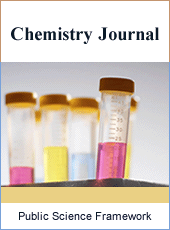Chemistry Journal
Articles Information
Chemistry Journal, Vol.4, No.3, Sep. 2018, Pub. Date: Aug. 6, 2018
Applied Investigation of Metal Nano Agent in Purification of Industrial Wastewater Stream
Pages: 38-42 Views: 2315 Downloads: 459
[01]
Masoud Nazari, Department of Chemical Engineering, Sirjan Branch, Islamic Azad University, Sirjan, Iran.
[02]
Farshad Farahbod, Department of Chemical Engineering, Firoozabad Branch, Islamic Azad University, Firoozabad, Iran.
[03]
Ramin Shamsi, Department of Chemical Engineering, Sirjan Branch, Islamic Azad University, Sirjan, Iran.
The drilling fluid is used in the upstream industries. Drilling fluid has basic roles in the heat transfer and transfer of cutting to the earth surface. The water based drilling fluid has minimum effect on the ecosystem shocks. The cutting of water based drilling fluid drained in the open and closed lagoons. This discharge can threat the sea and dry ecosystem. The treatment of cuttings of water based drilling fluid is studied in this paper. Tin oxide and Titanium oxide are used as nano coagulant in this research. The experiments were conducted to measure the important parameters in quality of treatment by addition of four different amounts of nano two metal oxides 1, 1.5, 2 and 2.5 gr. Experimental results show, the power of coagulant in elimination of component which makes turbidity. In addition, the increase from 1 gr to 2.5 gr of coagulant decreases this fraction from 0.19 to 0.14.
Pre-treatment Reactor, Sea Ecosystem, Softening Process, Water Base Cutting Treatment, Nano Coagulants
[01]
American Petroleum Institute, 2005. Recommended Practice for Testing Well Cements. API Publishing Services, Washington, D. C., pp: 171.
[02]
Banfill, D. and P. F. G. Kitching, 1991. The Yield Stress of Oilwell Cement Slurries. In: Rheology of Fresh Cement and Concrete.
[03]
Bannister, C. E., 1980. Rheological evaluation of cement slurries: Methods and models. Proceeding of the SPE Annual Technical Conference and Exhibition, September 21-24, Dallas, Texas.
[04]
Sivagami K., Sakthivel K. P., Nambi Indumathi M., Advanced oxidation processes for the treatment of tannery wastewater, Journal of Environmental Chemical Engineering, Volume 6, Issue 3, June 2018, Pages 3656-3663.
[05]
Boukhelifa, L., N. Moroni, E. Spa, S. G. James, S. L. R. Delage, M. J. Thiercelin, G. Lemaire, I. Natl and A. Insa, 2005. Evaluation of cement systems for oil- and gas-well zonal isolation in a full-scale annular geometry. SPE Drill. Comp., 20 (1): 44-53.
[06]
Frittella, B. S. F., B. J. Services and M. Babbo, 2009. Best practices and lessons learned from 15 years of experience of cementing hpht wells in italy. Proceeding of the SPE/IADC Middle East Drilling Technology Conference and Exhibition, October 26-28, Manama, Bahrain.
[07]
Grinrod, M. and B. Vassoy, 1988. Development and use of a Gas-tight cement. Proceeding of the IADC/SPE Paper No. 17258, Presented at the 1988 IADC/SPE Drilling Conference held in Dallas, Texas, February.
[08]
Guillot, D., 2006. Rheology of Well Cement Slurries. In: Nelson, E. B. and D. Guillot (Eds.), Well Cementing. Texas, Schlumberger, pp: 93-142.
[09]
Wang Meng, Chen Yinguang, Generation and characterization of DOM in wastewater treatment processes, Chemosphere, Volume 201, June 2018, Pages 96-109.
[10]
Harris, K. L. and H. Service, 1991. New lightweight technology for the primary cementing of oilfield casings in cold environments. Proceeding of th International Arctic Technology Conference, May 29-31, Anchorage, Alaska.
[11]
Hodne, H., 2007. Rheological performance of cementitious materials used in well cementing. Ph.D. Thesis.
[12]
Kulakofsky, D. and R. Vargo, 2005. New technology for the delivery of beaded lightweight cements. Proceeding of the SPE Annual Technical Conference and Exhibition, October 9-12, Dallas, Texas.
[13]
Labibzadeh, M., B. Zahabizadeh and A. Khajehdezfuly, 2010. Early-age compressive strength assessment of oil well class G cement due to borehole pressure and temperature changes. Science, 6 (7): 38-47.
[14]
Da Zhao, Yang Lu, Zhang Xinyan, Li Dong, Optical constants of oilfield wastewater, Optik, Volume 167, August 2018, Pages 37-41.
[15]
Mehta, P. K. and O. E. Gjorve, 1982. Properties of portland cement concrete containg fly ash and condensed silica fume. Cem. Concr. Res., 12 (5): 587-595.
[16]
Miranda, C. R., R. D. Petrobras, F. Toledo and E. M. R. Fairbairn, 2010. New design of high-performance cement systems for zonal isolation: Influence on porosity, rheological parameters and chemical and mechanical resistance. Proceeding of the SPE Latin American and Caribbean Petroleum Engineering Conference, December 1-3, Lima, Peru.
[17]
Mirza, J., M. Mirza, V. Roy and K. Saleh, 2002. Basic rheological and mechanical properties of high-volume fly ash grouts. Construct. Build. Mater., 16 (6): 353-363.
[18]
Mueller, D. T., R. L. D. Iii, T. Western and N. America, 1991. The versatility of silica fume as an oilwell cement admixture. Proceeding of the SPE Production Operations Symposium, April 7-9, Oklahoma City, Oklahoma, pp: 529-536.
[19]
Salgot Miquel, Folch Montserrat, wastewater treatment and water reuse, Current Opinion in Environmental Science & Health, Volume 2, April 2018, Pages 64-74.
[20]
Nediljka, G. M., M. Davorin and K. Gracijan, 1994. Cement slurries for geothermal wells cementing. Rudarsko-Geološko-Naftni Zbornik, 6 (1): 127-134.
[21]
Shadizadeh, S. R., M. Kholghi and M. H. S. Kassaei, 2010. Experimental investigation of silica fume as a cement extender for liner cementing in iranian oil. Gas Wells, 7 (1).
[22]
Shahriar, A. and M. L. Nehdi, 2011. Anjuman Shahriar Investigation on Rheology of Oil Well Cement Slurries.
[23]
Ibrahimoglu Beycan, Yilmazoglu M. Zeki, Disposal of olive mill wastewater with DC arc plasma method, Journal of Environmental Management, Volume 217, 1 July 2018, Pages 727-734.
[24]
Shahriar, A. and M. L. Nehdi, 2012. Optimization of rheological properties of oil well cement slurriesusing experimental design. Mater. Struct., 45 (9): 1403-1423.

ISSN Print: 2381-7674
ISSN Online: 2381-7682
Current Issue:
Vol. 6, Issue 1, March Submit a Manuscript Join Editorial Board Join Reviewer Team
ISSN Online: 2381-7682
Current Issue:
Vol. 6, Issue 1, March Submit a Manuscript Join Editorial Board Join Reviewer Team
| About This Journal |
| All Issues |
| Open Access |
| Indexing |
| Payment Information |
| Author Guidelines |
| Review Process |
| Publication Ethics |
| Editorial Board |
| Peer Reviewers |


